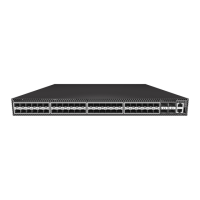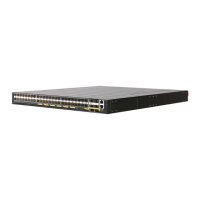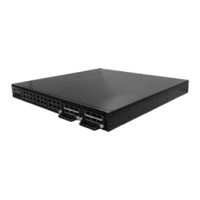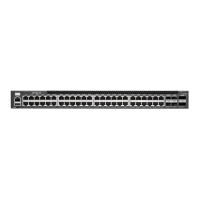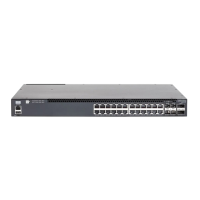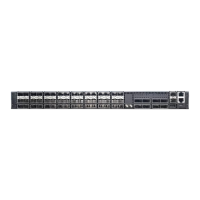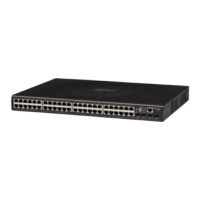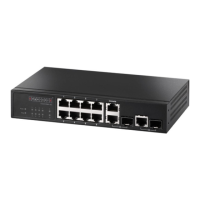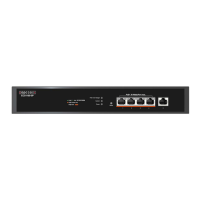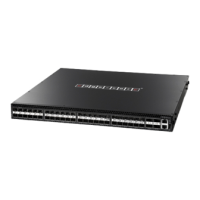Chapter 10
| Interface Commands
Transceiver Threshold Configuration
– 384 –
Example
The following example sets alarm thresholds for the transceiver voltage at port 1.
Console(config)interface ethernet 1/1
Console(config-if)#transceiver-threshold voltage low-alarm 4
Console(config-if)#transceiver-threshold voltage high-alarm 2
Console#
show interfaces
transceiver
This command displays identifying information for the specified transceiver,
including connector type and vendor-related parameters, as well as the
temperature, voltage, bias current, transmit power, and receive power.
Syntax
show interfaces transceiver [interface]
interface
ethernet unit/port
unit - Unit identifier. (Range: 1)
port - Port number. (Range: 1-32/54)
Default Setting
Shows all SFP interfaces.
Command Mode
Privileged Exec
Command Usage
◆ The switch can display diagnostic information for SFP modules which support
the SFF-8472 Specification for Diagnostic Monitoring Interface for Optical
Transceivers. This information allows administrators to remotely diagnose
problems with optical devices. This feature, referred to as Digital Diagnostic
Monitoring (DDM) in the command display, provides information on
transceiver parameters including temperature, supply voltage, laser bias
current, laser power, received optical power, and related alarm thresholds.
◆ When the measured value of a monitored DDM item meets the condition of a
warning state or an alarm state, an exclamation mark (i.e., “!”) will be added
behind the value of the warning threshold value or alarm threshold value.
◆ This switch does not support the detection of the Rx loss signal of an SFP
transceiver, so the Rx loss status of an SFP transceiver is always treated as
deasserted. The warning/alarm state of a monitored DDM item is therefore not
related to the Rx loss status of an SFP transceiver

